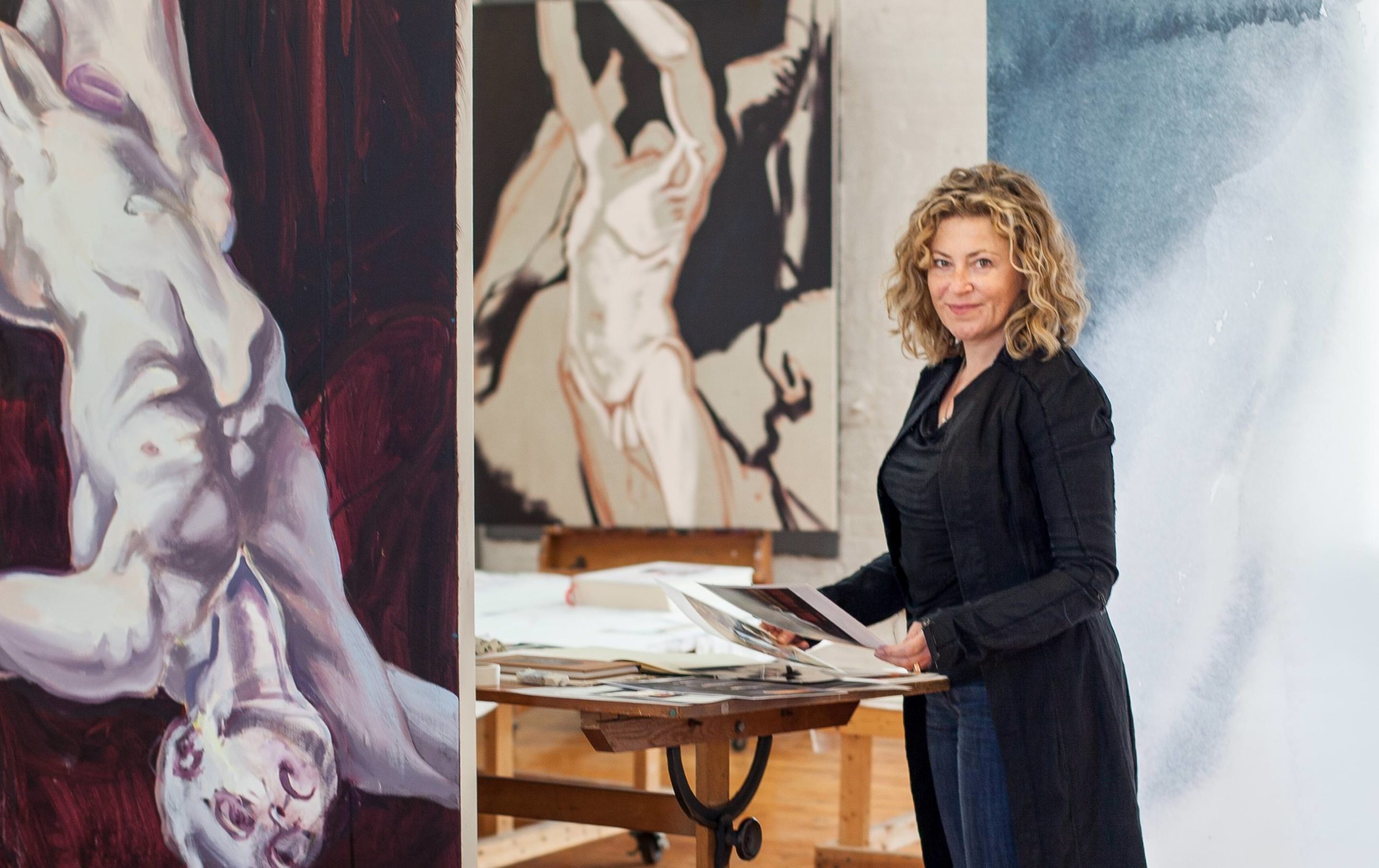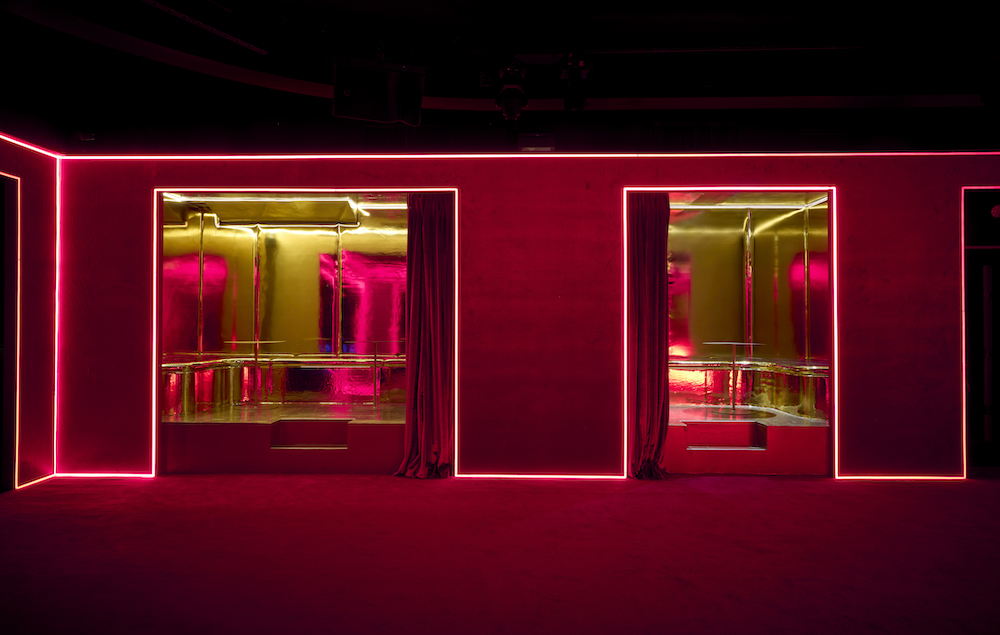Patricia Cronin likes to ask three questions through her work: Whose body has value? Who gets to decide? And what are the consequences to the individual and to the community?
These questions and the answers they provoke have propelled her to create an array of work like Memorial To A Marriage (2002), a three-ton marble sculpture of herself and her partner, artist Deborah Kass, before same-sex marriage was legal, placed on their burial plot at Woodlawn Cemetery in the Bronx. That work, as well as others of hers, have gone on to public and private museums and collection, and have been featured in art history textbooks.

Tack Room (1998).
Courtesy of Patricia Cronin.
When we visited Cronin in her Brooklyn studio, she was very busy. Her Shrine For Girls, shown at the 2015 Venice Biennale and last summer at The FLAG Art Foundation, is about to travel to Ireland. It’s a heartfelt three-part altar made of clothing to honor specific mistreated and murdered women in Africa, India, and Ireland, and a reality check in the face of the numbing 24-hour shock-wave news cycle. In addition, she had a large-scale project set to appear at The Armory Show in March, a restaging of her 1997 Tack Room. And there was a growing list of projects on the horizon.
Sitting with us, she spoke with us about time travel, feminism, and honoring women with the dignity that was not afforded to them when they were alive.
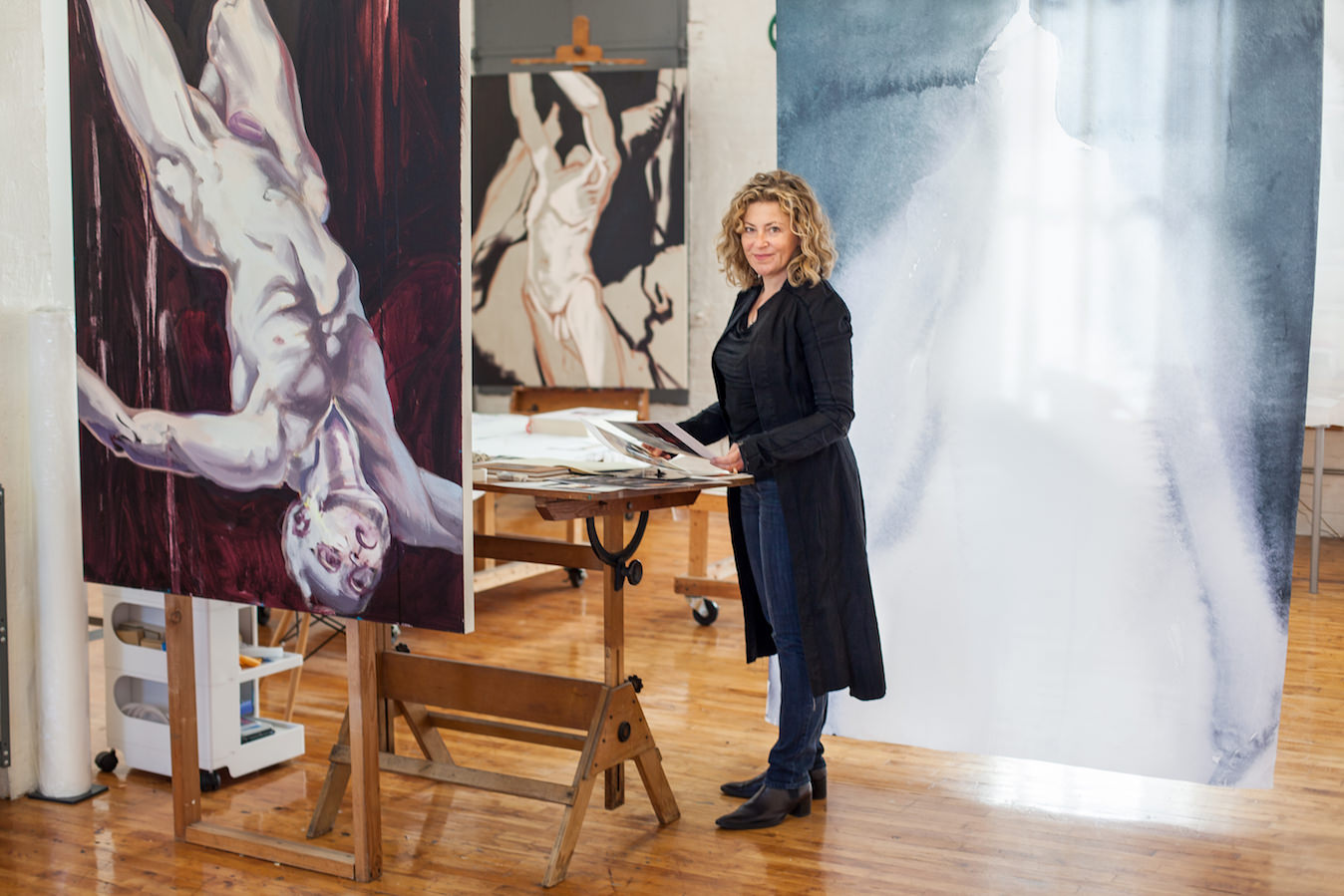
Patricia Cronin.
Photo by David Rozenblyum.
Courtesy of Patricia Cronin.
WHITEWALL: Tell us about Shrine for Girls, which was presented during the Venice Biennale in 2015 in the oldest church of the city, and was shown at The FLAG Foundation here in New York thereafter.
PATRICIA CRONIN: The month before, those 276 Chibok students had been kidnapped by Boko Haram. And on the plane, I saw the movie Philomena, which I had never seen, and I was sobbing about the Magdalene laundries—these forced-labor camps for girls. It was unbelievable. And then the day before I ran up to Venice, there was this horrible story about these two cousins in India, Pushpa and Murti, that were gang-raped and lynched.

Tack Room (1998).
Courtesy of Patricia Cronin.
So I’m sitting there in Venice, looking at the church, doing a couple of sketches. I thought, “These poor girls. They need a shrine in their honor. A shrine . . . shrine . . . ‘Shrine for Girls!’” I had three stone altars. I couldn’t hang anything on the walls, and I had three stories I was obsessed with that I couldn’t get out of my head. They’re from three different parts of the world, and suddenly, it just made sense.
One of the most poetic and moving moments for me was when I was being interviewed for a British channel, and we had to rope off the church for about an hour. A group of Indian women tourists came by, and they were just going to check into their hotel, but on the outside of the church, there’s this totem of signage. It had “Shrine For Girls” written in the 12 most frequently spoken languages. They saw it, read it in Hindi, looked at the altar, recognized their clothes, went back to their hotel, went through all of their luggage, and found the one black sari they were traveling with and came down to give it to me to add to the shrine. That’s how I define success—that my work can speak across language barriers and geographical boundaries. It’s not how much my work sells for or trades for at auction. This is how I define success.
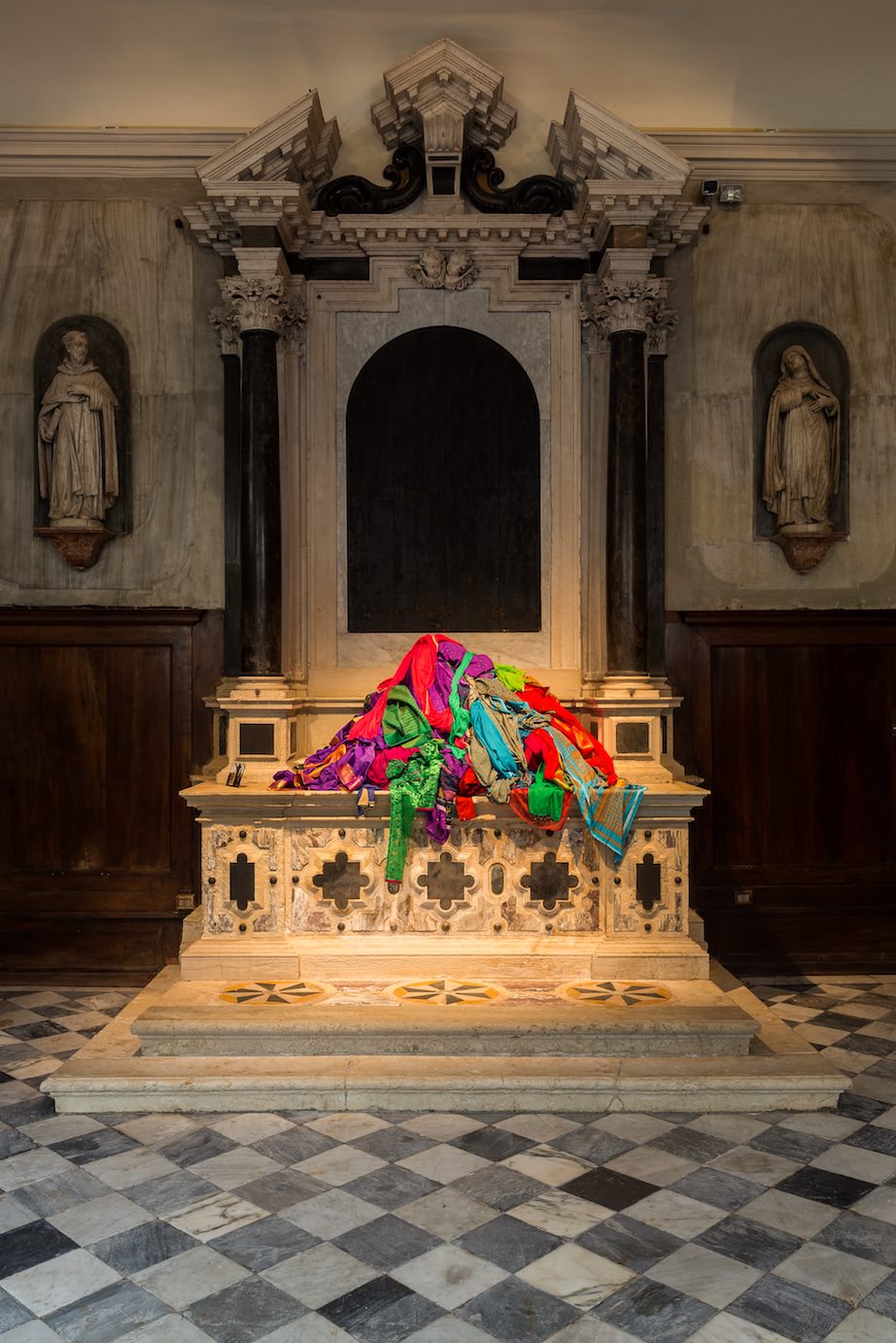
Shrine for Girls at the Venice Biennale 2015.
Photo by Mark Blower.
Courtesy of Patricia Cronin.
When I put this in the church, I thought it was an unbelievably feminist move to put what I considered relics from my gender martyrs on altars where previously the religious relics had been. I also brought three major world religions under one roof. Religion was really used to subjugate all three stories and their classes.
WW: And then it traveled to The FLAG Art Foundation, and is traveling to Dublin next, too?
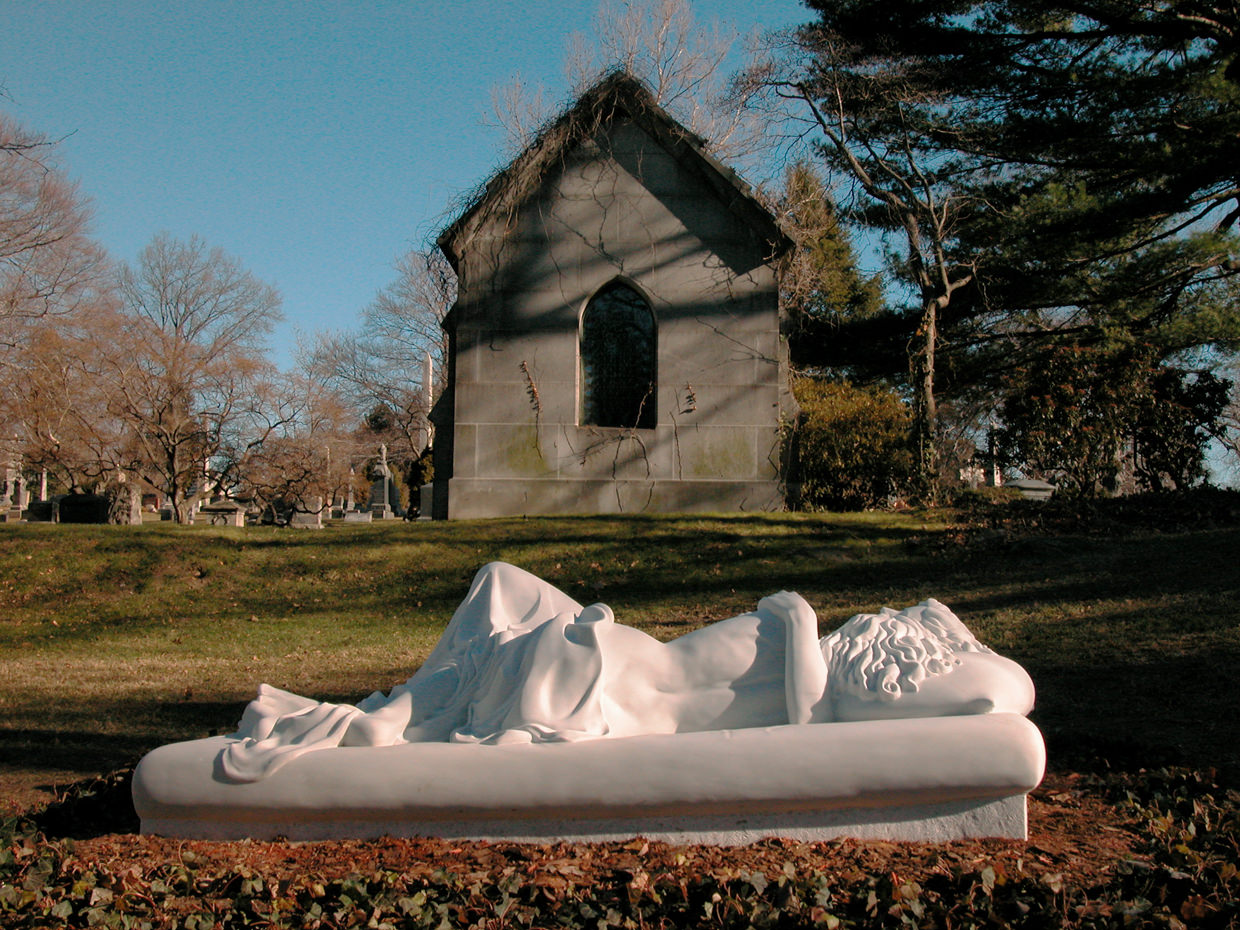
Installation view of Memorial to a Marriage at Woodlawn Cemetery in the Bronx, NY. November 3, 2002.
Courtesy of Patricia Cronin.
PC: Yes. The FLAG Art Foundation, and Glenn and Amanda Fuhrman, were the lead sponsors of the Venice presentation, so when they wanted to show it at FLAG, it made perfect sense. They showed it last summer. It’s supposed to go to India, but I had to postpone it due to a rupee crisis, and so it’s going to Dublin this summer. It’s exciting because it’s going to the LAB Gallery for the city council of Dublin, so it’s the city government that’s behind this. It’s next door to a former Magdalene laundry, which just happens to be the last one that closed—in 1996! I’m excited to present it there because it gives great opportunity for discussion, and people want there to be a permanent museum about this. They’re not quite there yet, so I think by my bringing Shrine For Girls there, there may be more understanding that there needs to be more done to address this.
Shrine For Girls is also being shown in both sacred and secular architecture—but still architecture of the powerful. I’m bringing these pieces that I’m trying to honor these women with because I want to give them some dignity that they weren’t afforded when they were alive.
The exhibition is also going to be featured in Art History—the largest read art history book in the English language—in “The International Scene Since 1950.” It will be written by Marilyn Stokstad and Michael Cothren.
WW: Tell us about Tack Room, which you’re showing at The Armory Show in March, and which hasn’t been seen in nearly two decades since it was at White Columns.
PC: I’m trying to be prophetic about my future while re-living an adolescence I never had. I like time travel! I love going back and forth throughout art history. It was my first readymade—just a year after my first solo show at Brent Sikkema, now Sikkema Jenkins—with these horse portraits. Because who gets a horse portrait, or 50? The wealthy, the powerful. It’s obsessive. It’s kind of a cross between a Paul McCarthy and a Jason Rhoades—but the female version.
It’s in Eric Shiner’s curated platform section across from the champagne lounge [at the fair]. It’s hysterical. I originally made it in 1997 to 1998 (with everything collected in that time). There’s spurs and Spurs, Maverick toilet paper, Hermès stuff. I made a few bronze horse sculptures, and they’re all cast from these plastic, hollow, and unlimited-edition Breyer toys. I was like, “I’m going to take the young girl’s object of desire and elevate it to the status of art history by casting it in bronze,” which Degas called the medium for eternity, and I did small editions in solid bronze.
This interview was published in the spring 2017 issue of Whitewall, out now.



